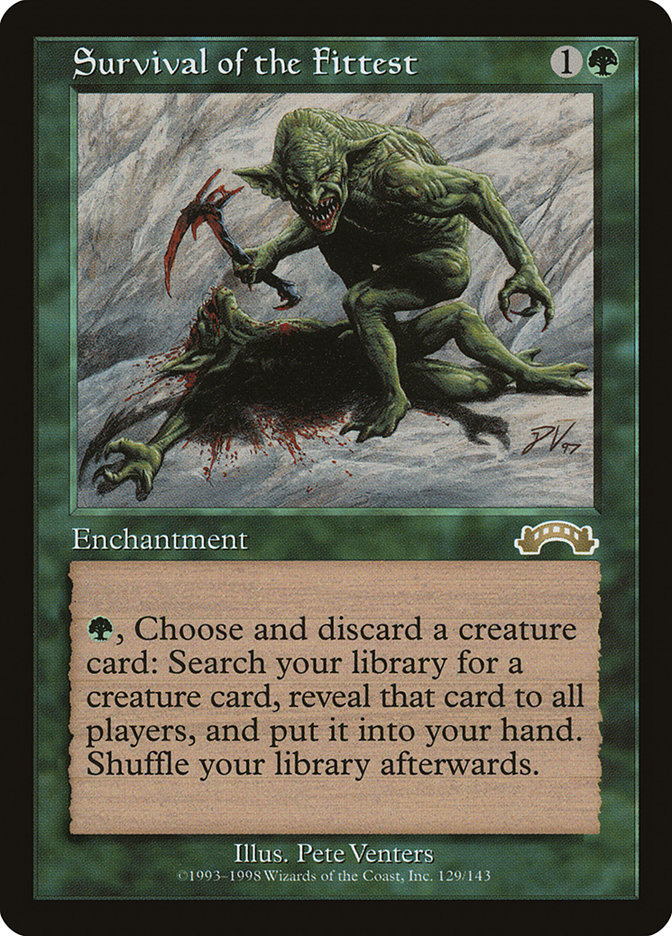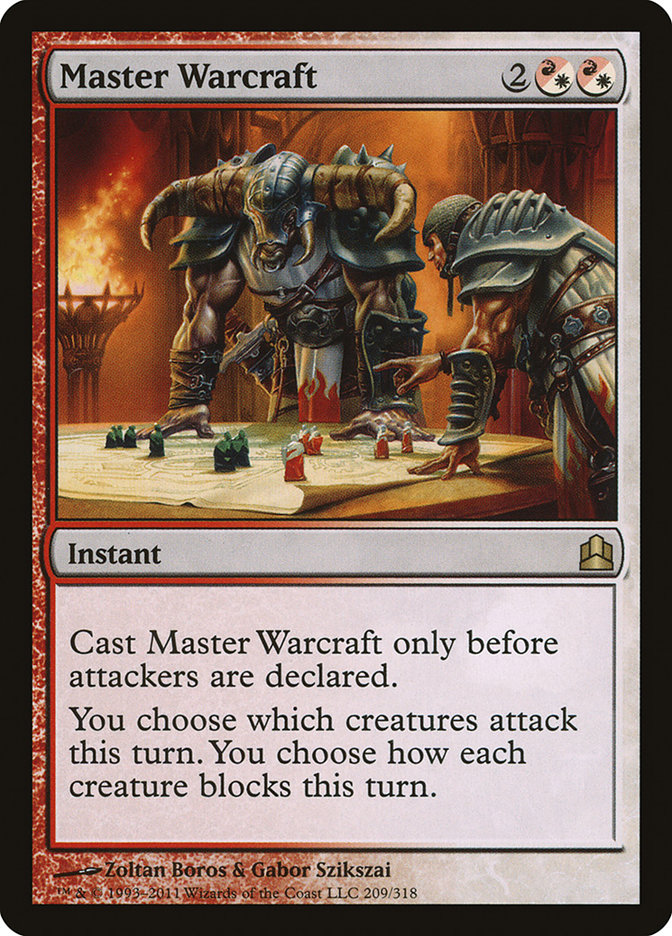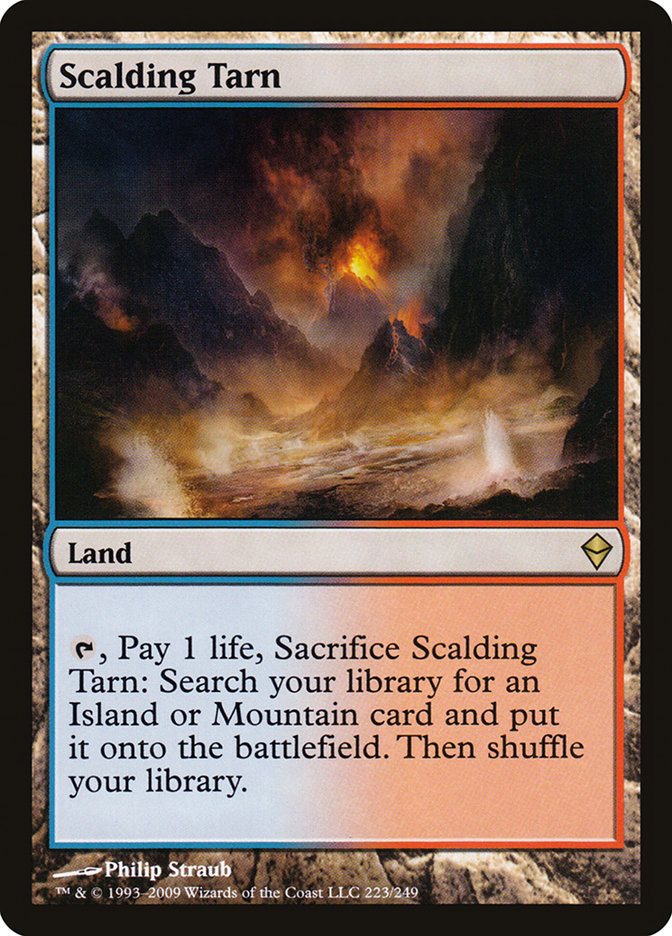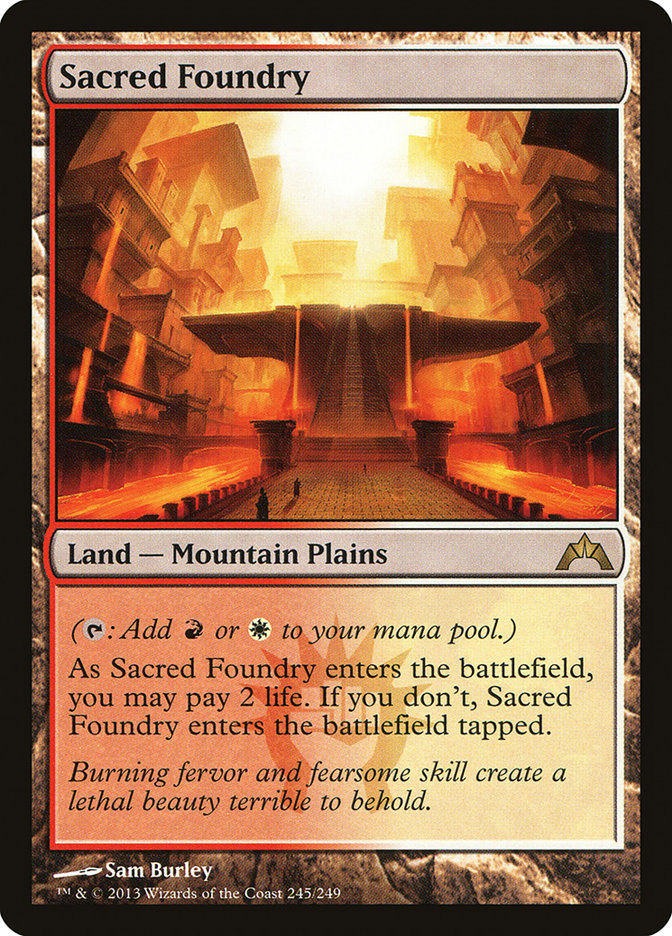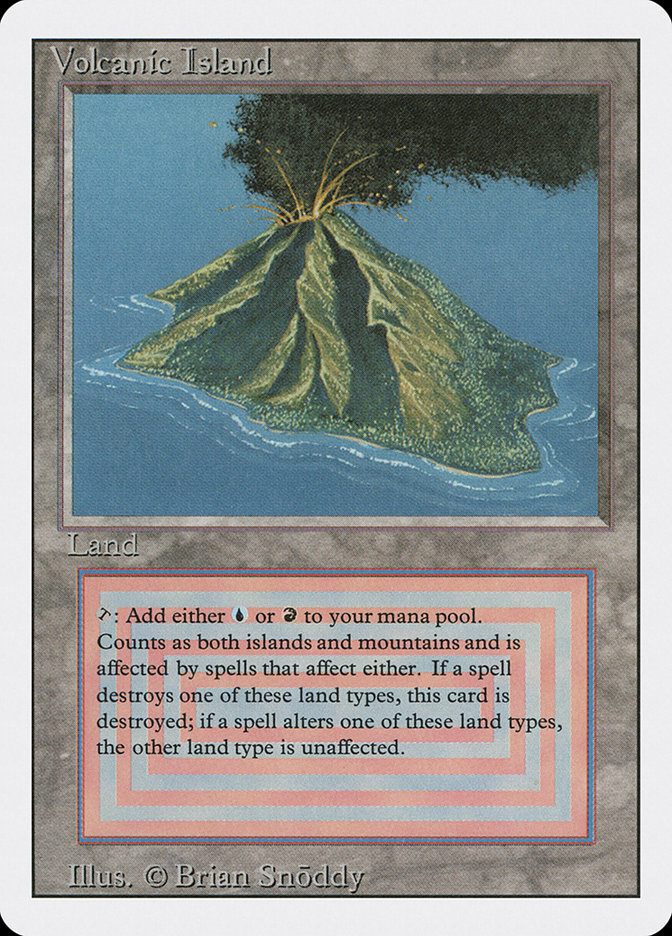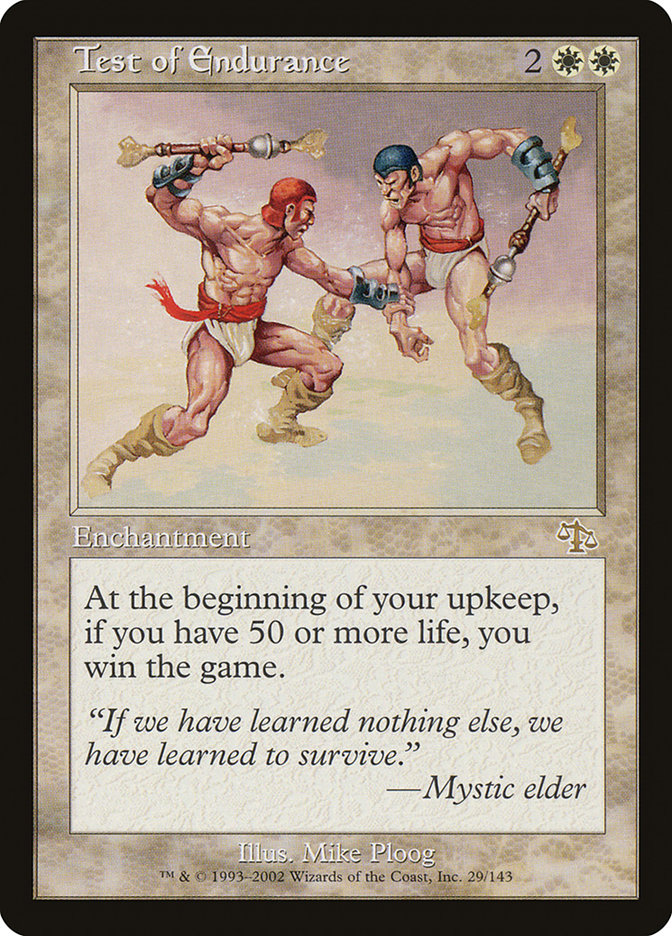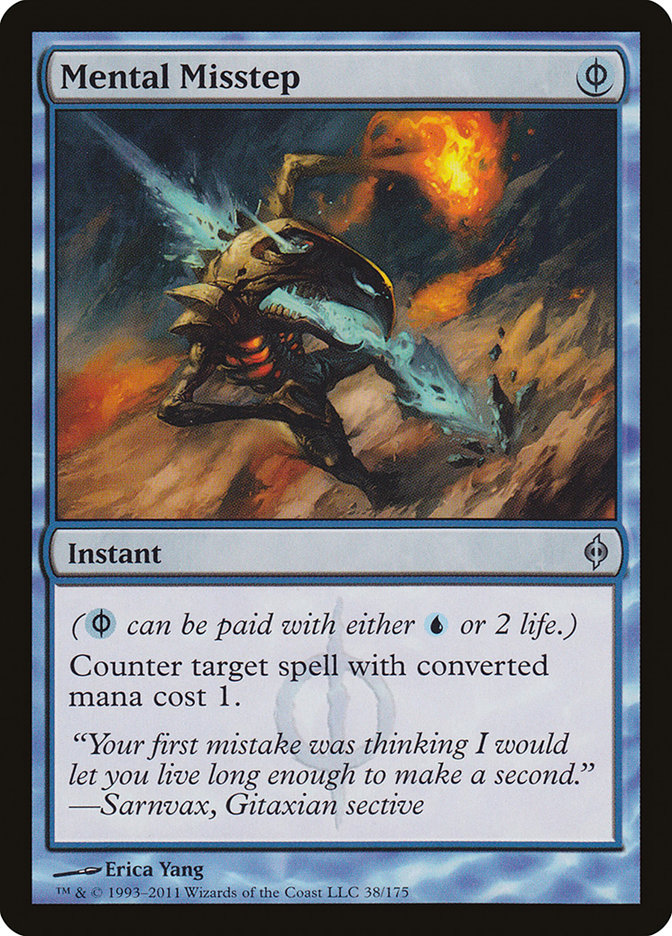Lately I have been receiving a lot of decklists that people want my opinion on. They all look very cool and interesting, but I have one overarching concern: Can they survive the metagame?
So many people want to brew decks, but most people never finish them. They will put together a list, find powerful cards and synergies, and be really excited to play it, but then nothing. A deck can be cool and exciting and still be uncompetitive. If you are playing in a small setting, like Friday Night Magic or at your kitchen table, then the deck may be just fine, or even tuned very well against what you normally play against, but can it stand up to the rest of the metagame?
Build a Deck
The first step to testing your deck is the most obvious one: build a deck! Once you have an idea for a new deck, you want to gather cards and find which cards will fit the roles you are trying to fill best. Use card search engines to look for keywords and abilities filtered to the format you are building for. These search engines are very powerful, so take the time to learn some of the syntax to help you search much more efficiently. Consider looking at other decks for inspiration or clues to help you find the cards you may be looking for.
Now that you have a pile of cards, you want to make sure it goldfishes well and can finish games. Make sure your deck has a reasonable win condition that can be completed in a timely manner for tournament settings. If your deck tries to go into the late-game, you need to figure out how you are going to survive until then. If it can win on turn 3 as long as it isn’t interacted with, make sure you can still win if you are interrupted. Consider how you plan to finish the game and prepare for decks or cards that may derail your strategy.
Once you have your deck built and put together, make sure you know how each card works. If you are not certain, look up the rulings or ask a judge. Figure out what little interactions there are in your deck and what special things your cards can do when played together. This may be the reason you build the deck or something unexpected you found while learning the rules interactions of your cards.
Manabases can be one of the most challenging parts of a Magic deck to tune. Finding the exact right number of lands and the spread and balance of colors you want is important. In a format like Modern or Legacy you can play fetchlands and shocklands or duals, which makes it a bit easier to play more colors. Try to have a good reason for each additional color you are running, because inconsistent mana is very hard on a deck.
Beginning Testing
When it is time to begin testing on a new deck, you are not ready to play quite yet. You need to still work on your own (or with friends or teammates) to think through each matchup and consider what your gameplan is against it. Look at the metagame for the format you built your deck for. Use the SCG Deck Database along with MTGGoldfish or MTGTop8 to see what the top decks for the most recent few big tournaments are and also what decks have been doing well for a long time.
Think through each of the top decks and try to answer several questions. What is your strategy against this deck? Do you have a fair chance at winning in this matchup? What strategies are they going to use, and how will they try to combat your deck? Once you have a good idea how each matchup will play out, check to see if you have an acceptable matchup against at least half of the top-tier decks.
As you think through each deck, take notes on what your optimal gameplan will be in a certain matchup. For example, if you are building a new Modern deck, think through your matchup with Dredge, Infect, Jund, Bant Eldrazi, Affinity, Burn, and Tron, as well as other decks you see regularly. For example, you may want to run graveyard hate against Dredge, but against Infect you will need ways to deal with small creatures or pump spells. Each matchup has different strengths and weaknesses you want to consider when crafting your gameplan against them. If you are not sure you can win in too many matchups, you need to go back and find an answer.
Playing Games
It is finally time to play some Magic! I find this to be the fun part of deckbuilding, personally, but it is also the part that takes the most time and where many deckbuilders will stop trying to improve their deck.
When you begin to play matches, it is very important to playtest against good players and against a large variety of decks and players. You want to make sure your opponents know their decks well and are piloting them effectively. The more you can test, the more information you will get.
Test against the top metagame decks to get a good feel for the matches you expect to play at a large tournament. If you are trying to build for a smaller setting, you can work on the decks you know are there regularly, but it is still useful to test against the big decks. Make sure to play lots of games, but know you don’t have to play them all in tournament order. When I am testing on my stream, I will often play two games pre-sideboard and four games post-sideboard, alternating who is on the play or the draw.
Do not neglect sideboard games. You will always play more games of sideboarded Magic than you will Games 1. The strength of many decks is a balanced sideboard that fits well with the deck. If you are interested in learning more about building a sideboard, check out my previous article on SideboardinginModern.
When testing, there are two ways to practice for mulliganing. If you are trying to see what your deck can do or are just beginning play with it, I recommend not mulliganing beyond six cards. Later, once you know how to pilot the deck better, you can begin to see how well the deck can play when forced to go to smaller opening hand sizes. Don’t wait too long to try mulliganing more. Some decks just really struggle with mulligans and that is very important to know about your deck.
As you play more, you will start to see holes in your strategy. Pay attention to any weakness you may find and ask your opponents what they think the weak points of your decks are. Ask playtest opponents for opinions after you play; they saw the game from a different angle and may have very useful insight for you. If you are mulliganing too often and it is hurting your strategy, go back and see if there is another card that may work better and smooth out your mulligans.
Don’t change your whole deck after testing only one or two matchups unless there is a very clear weakness you need to address. It is possible that you may have started with hard matchups but will be well-positioned against everything else. Hopefully you were aware that these particular matches would be hard from when you thought through the matchup before. However, playing can prove to be different from theory, so taking the time to play through each matchup is still very valuable.
Another part of testing that is super-important is to take notes. You need to be able to remember how your matches went and if there were any blunders that may have affected the outcome. Write down any particularly good or bad plays you learned about as you were testing and note what led you to victory or kept you back. Having a handy reference to check back on your earliest testing can be very useful after you have played a dozen other matchups.
Discount any matches where you or your opponent made an egregious mistake. Those don’t tell you how the matchup will go in a tournament setting. You can’t expect good players to make mistakes in order for you to win. The surprise factor of a new deck does not last very long.
Review and Edit
This is the step in the deckbuilding process that gets very hard. Being able to tune a deck and find all of the prefect cards and balance separates the good players from the great ones. One strategy is to build a solid deck with many options and choose the cards you want for each tournament. This is one of the strengths of the Modern Grixis Delver deck, but not every deck has the luxury of being so flexible. Modern Affinity is a very rigid list with few flexible slots. Some decks just have a near-perfect 75 that is always the right choice.
There are so many cards in Magic that it can be hard to find the right one for your deck. It is possible that the perfect card doesn’t exist but will get printed later, like Prized Amalgam in Modern Dredge. As new sets are released, don’t be afraid to revisit old decklist ideas and add the new cards to them.
Keep Trying
There are many great parts of Magic: The Gathering, and if brewing decks is your favorite part, then you should keep doing it. You don’t have to do all of these steps by yourself. In many Magic teams, people are better are certain parts of testing and they will work together to optimize the deck they are working on. Find the part of Magic you love, and have fun with it! Have a wonderful week, and as always, happy gaming!


